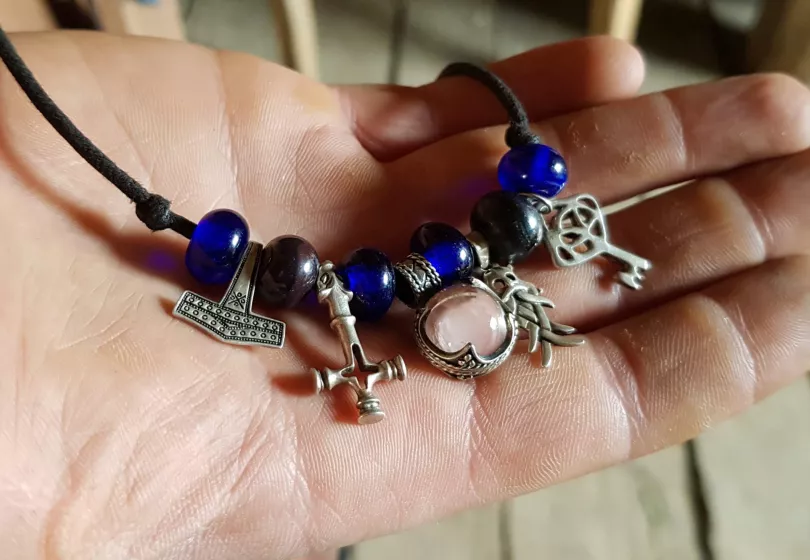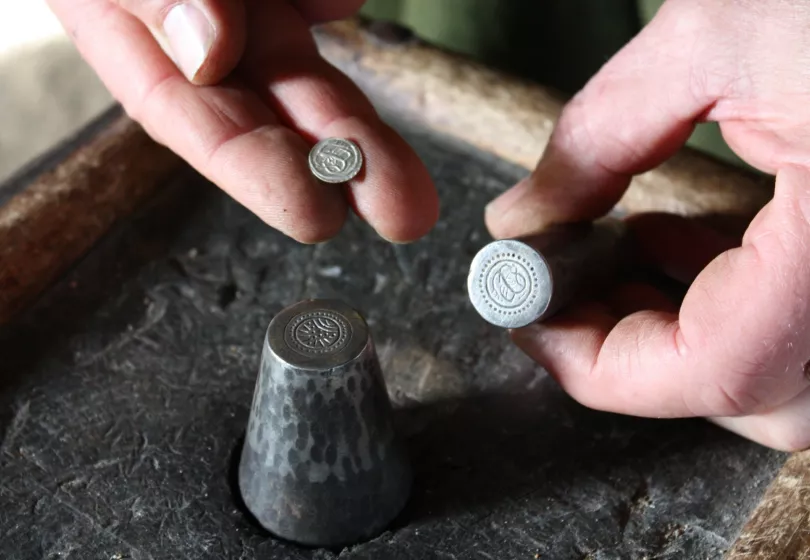The jeweller and his girls
A heavy brooch in a precious metal bears witness to the status of its owner and is at the same time one of the safest ways to store and guard one's valuables. For this reason, demand for the jeweller's work is much greater than his ability to produce new wares, but fortunately there is never a shortage of young people willing to go into apprenticeship with him. The young girls especially buzz around him like bees around the honey pot. They put their backs into the hard, repetitive work. In return they are allowed to wear the jeweller's works. This makes the girls even prettier and is obviously good for business.
The first coin minter in Scandinavia?
At the Viking Age market place by Ribe Å all throughout the 8th century there was a lively trade in small silver coins, known as sceattas. 'Sceat' is the Old English word for 'coin' and related to the Danish word 'skat' ('treasure' or 'tax'). The sceattas were barely 1 cm across and weighed only about 1 g, and they were - with few exceptions - adorned by the stylized face of Wodan (Odin) on one side and a monster on the other. For this reason, this type of coin is also known as the "Wodan-Monster."
During the excavation of the market parcels in Ribe, approx. 200 of these sceattas have been recovered to date, and this number gives weight to the theory that the coins were minted on or near the site of the market place. If this is the case, the first coins of Scandinavia were struck here in Ribe.
Establishing and maintaining currency for a period of 100 years requires a strong centralized power - and there is a lively ongoing debate between archaeologists and historians as to whether this could have been possible. If it was so, history books must once again be rewritten on account of archaeological discoveries made in Ribe!



